American viewers are about to discover what the rest of the world learned years ago: The Paralympics rock.
By Rene Agredano
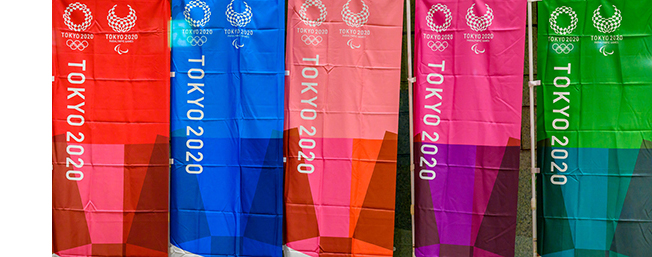
Nearly a decade has passed since the 2012 London Paralympics, but the excitement of those Games still feels fresh to Glenn Merry.
“The 2012 Games in London completely shifted the culture within Great Britain for people with disabilities,” says Merry, executive director of Move United, the largest US network of adaptive sports organizations. Advertisers and media organizations spent months promoting the Games, grabbing attention with compelling news coverage and eye-catching ad campaigns such as “Meet the Superhumans.” When the competition finally began, British viewers tuned in—and they were hooked. In addition to forging a new fan base for adaptive sports, the 2012 Paralympics changed the public’s perceptions of disability in general. It was a watershed moment for inclusion, one with lasting effects in British society.
“That left such a mark on me,” says Merry, a lifelong advocate for diversity and inclusion in sports. If all goes well, the Tokyo Games may leave a similar impression. American media and corporate partners are committing significantly more resources to the Paralympics this year than they ever have before. They’re making a concerted effort to raise the Paralympics’ visibility in the United States to new levels, with an eye toward building an audience for the event’s return to our nation at the 2028 Los Angeles Games.
Playing Catch-up
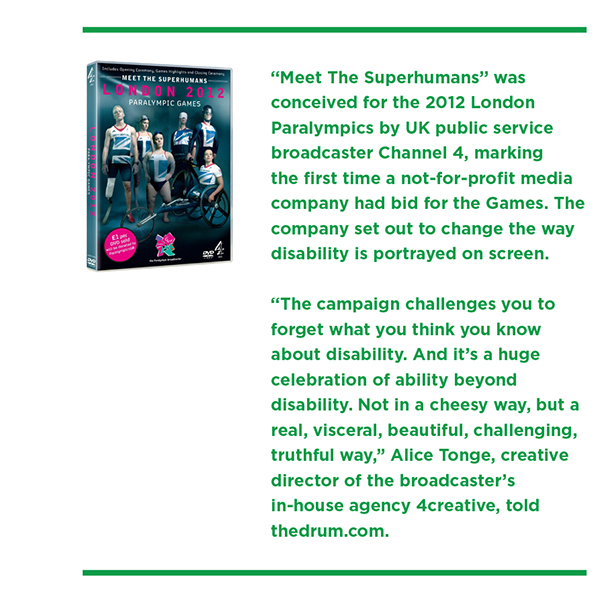
The Paralympics draw a huge audience almost everywhere outside the United States. Sports fans in most nations follow their country’s Paralympians with as much (or more) fervor as they show toward their Olympic heroes. The global audience has skyrocketed since the first international broadcast of the 2000 Paralympics in Sydney, growing to a record 4.1 billion viewers for the 2016 Rio Games. The Paralympics now rank as the world’s third most-watched sporting event, eclipsed only by the Olympics and the World Cup.
However, the Paralympics barely registers on the crowded American sports calendar. TV networks have traditionally allotted scarce hours to the Games and placed them on niche broadcast channels. But this year is different. NBC’s coverage of the Tokyo Games will surpass all previous Paralympics in terms of broadcast time, sponsorships, and public awareness.
“NBCU’s commitment to the Paralympic Games and Paralympic movement has never been stronger,” says Alexa Pritting, coordinating producer for NBCUniversal’s Paralympic coverage. The exclusive US broadcast network of the Olympic and Paralympic Games is devoting unprecedented amounts of television and digital streaming time to Tokyo 2020. In addition to a record 1,200 hours of coverage, the plan calls for the first-ever live prime-time Paralympic broadcasts on NBC’s flagship network. All 22 Paralympic sports will be covered, and NBC will include its signature athlete vignettes that humanize the competitors and tell their backstories.
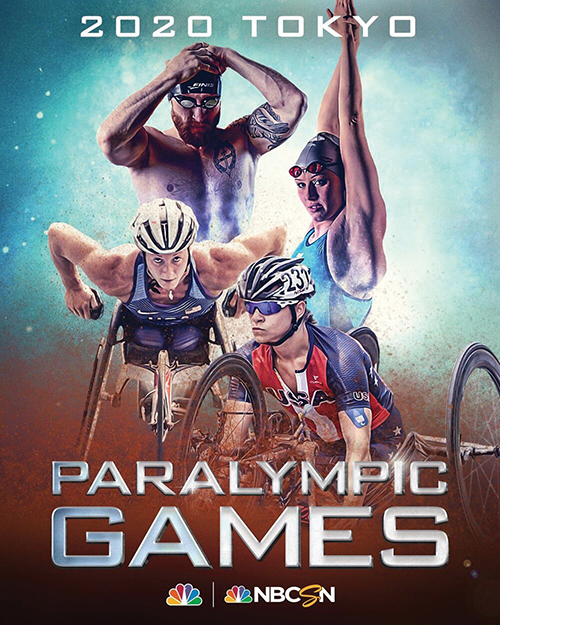
“NBCUniversal’s coverage of the Paralympic Games aims to not only display the incredible skill of para athletes during competition,” explains Pritting, “but also the training and dedication that is done outside the field of play to reach the biggest stage in para sports. We strive to serve fans in a variety of ways, and of course will showcase compelling stories and dramatic competition while paying special attention to Team USA.”
Pritting says the network plans to heighten the wow factor of its broadcasts, telling stories that incorporate specialty graphics, short video clips, athlete interviews, and other elements to magnify their emotional resonance. The power of those stories to captivate viewers became apparent during the Super Bowl, when viewers and industry watchers raved about Toyota’s artistically shot 60-second ad featuring Paralympic swimmer Jessica Long. The spot ranked among the most talked-about commercials of the Super Bowl, making it a clear win for Toyota and adaptive athletics alike.
The commercial also served as an unofficial ribbon-cutting on an unprecedented commitment of US advertising dollars in support of the Paralympics. Companies like Toyota, Nike, United Healthcare, and Eli Lilly have invested heavily in the Games over the last few years, providing NBC with the revenue base it needed to devote more airtime to the Paralympics. Nearly 80 corporate sponsors have invested in the Tokyo Paralympics.
The business side of the Games may not mean much to the average viewer, but the infusion of corporate partners is essential to raising the Paralympics’ visibility. In 2012, low ad revenues limited NBC’s coverage to a scant 5.5 hours of coverage. The huge increase in this year’s coverage reflects a commensurate increase in commercial sponsorship.
The Oscar Effect
The 2012 Paralympics set new records for participation. More than 4,200 athletes from 164 countries flocked to London, competing in 20 different sports—the highest numbers in the history of the event at that time. But one Paralympian stood out above the others that year: South African sprinter Oscar Pistorius. Dubbed “the fastest man on no legs,” the double amputee captivated global audiences with his speed on carbon fiber running blades. And because he competed first in the Olympics, and then in the Paralympics two weeks later, Pistorius served as a bridge between the two events. Millions of people who thrilled to his racing in the Olympics stayed engaged for the subsequent Paralympics, specifically for the chance to see Pistorius run again. More than any other single figure, Pistorius caused people to associate disability with speed, power, and grace.
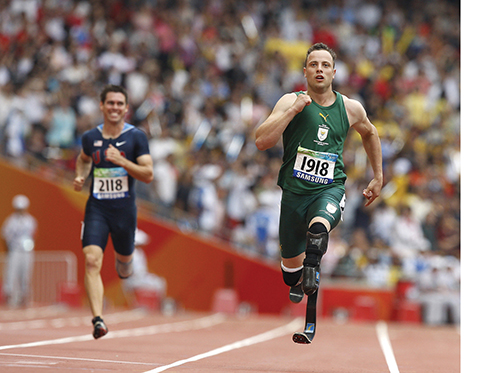
“Any time that the media begins to highlight adaptive sport or people with disabilities, it benefits all of us,” says Move United’s Merry. His organization serves as a critical training ground for US Paralympic talent. Nearly 70 percent of Summer Paralympians on Team USA were introduced to their sport by a Move United affiliate. Merry hopes the growing investments in Paralympic sport will trickle down to the local level, enabling Move United and its local chapters to add more programs, serve more people, and advance its mission of building community around adaptive sports.
The benefits of increased media attention and splashy Paralympics advertising will extend far beyond sports, Merry adds. With greater visibility, the Games may inspire more dialogue between able-bodied viewers and people with disabilities, helping to change perceptions and eliminate negative stereotypes about people living with disabilities. “Imagine the opportunity for a cultural shift of how people with disabilities are seen by the American public,” Merry says. “We’re trying to capture that energy and drive that energy forward for social change, for social justice.”
Of course, the Games can only have that effect if viewers actually watch. Despite the record-setting global audience for the 2016 Rio Paralympics, Americans were barely aware the Games were happening. The US audience was only about 8 million people during the two-week event, a figure dwarfed by the hundreds of millions who watched in Italy, China, the United Kingdom, and elsewhere.
Everyone from adaptive sports leaders to journalists and Paralympics enthusiasts has speculated about why Americans have been slow to catch on to the Games. Does the lack of engagement stem from America’s deep-seated unease around people with disabilities? That seems unlikely in the first nation to adopt national civil rights legislation prohibiting discrimination against disabled people. Or maybe viewers bypass the Games because they’re suffering from Olympics burnout? Perhaps it’s as simple as market saturation.
“We have so many more sports [in the US] than other places in the world,” says reporter Chris Smith of Sports Business Journal. Citizens of other countries share a national obsession for just one or two team sports, but American fans frequently follow multiple sports, teams, and leagues throughout the year. Smith explains that in a never-ending scramble for broadcast market share and corporate sponsorships, the fight for airtime and viewer loyalty is always tough, and especially so during an Olympic year. He adds that while these factors are no excuse for the historically abysmal Paralympics coverage, they hamper NBC’s efforts to draw viewers for unfamiliar sporting events.
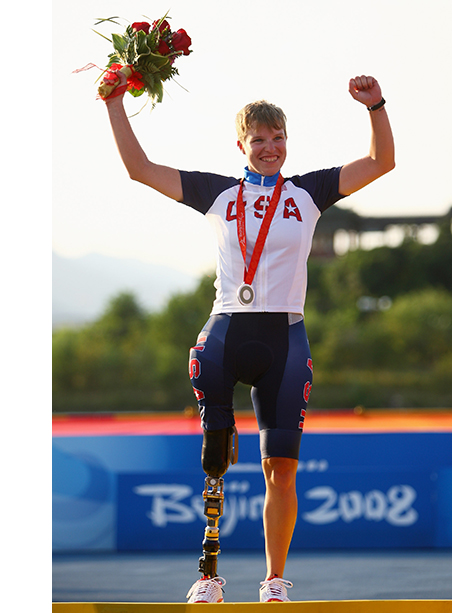
Holding people’s attention for two weeks is an added obstacle. “You have a finite amount of time in the day,” Smith explains, “and people have a finite amount of attention they can give to sports.” Despite this challenge, he remains hopeful that NBCU’s boosted coverage will help more Americans discover that the Paralympics are on par with the world’s greatest sporting events. “It’s not just lip service,” he says. “It is a meaningful commitment. More properties putting their weight behind the Paralympics and exposing it to more people can only help expand awareness and make more people interested in those sports.”
More Than a Sporting Event
Tokyo 2020’s broadcast and sponsorship boon has the potential to reach far beyond the closing ceremonies in September. Longtime sports journalist John Affleck, a professor at Pennsylvania State University’s Donald P. Bellisario College of Communications, explains that social justice movements have historically laid the foundations of an ongoing, collective discussion about equity and fairness for all citizens. From civil rights to marriage equality and disability rights, the increased awareness of the Paralympics is a critical building block that has the power to confront, discuss, and solve injustices in our nation.
“A large segment of the American population has a greater sensitivity right now to the idea of making things a little bit more equitable and supporting people who have not been always recognized for the way they’ve experienced American society and been treated,” says Affleck, who is covering the Tokyo 2020 Olympic and Paralympic Games alongside his students. He explains that media coverage of the Olympics and Paralympics traditionally spotlights the human side of individual athletes’ stories first, and their remarkable athletic accomplishments second. The explosion of resources devoted to the 2020 Paralympics sets the stage for the general public to become educated about the realities of limb loss and other disabilities.
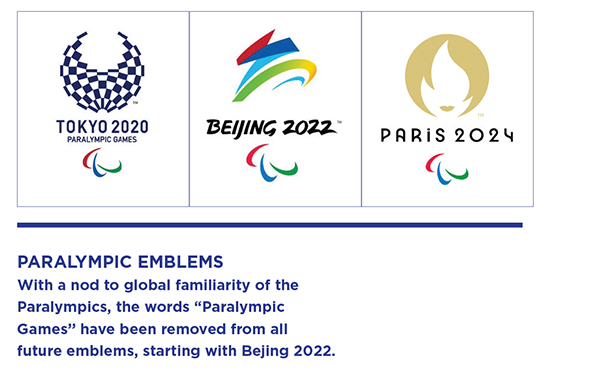
When the Olympics and Paralympic Games return to US soil for the Los Angeles 2028 Paralympics, corporate sponsors will be ready with even bigger investments of people, time, and money. From adaptive sports organizations in small-town America to multinational companies like Toyota, everyone who puts resources into the Games regards the quadrennial event as transcending athletics. Capturing more viewers undoubtedly means greater profits for investors, but society as a whole can profit as well. More eyes on the Games leads to greater public awareness of disability, a stronger trend toward inclusion, and cultural changes that make life better for everyone.



